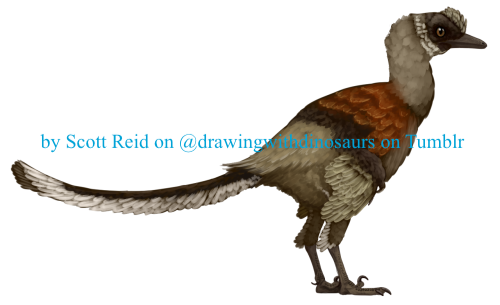Welcome to Almas

Name Definition
Wild man (named after a humanoid creature in Mongolian folklore)
Name Given By
Pei Rui, Mark A. Norell, Daniel E. Barta, Gabriel S. Bever, Michael Pittman, and Xu Xing in 2017
Location
Djadochta Formation in the Gobi Desert, Mongolia
Classification
Dinosauria, Saurischia, Theropoda, Maniraptora, Troodontidae
Size
around 0.4 meters tall (1.4 ft), 5 meters long (16 ft.) | these are just rough estimations
Temporal Range
Campanian - Maastrichtian stages of the late Cretaceous, ~75 - 71 million years ago
Ecological niche
small carnivore and possibly nocturnal hunter
Species/Sub Species
A. ukhaa
Diet
troodontids like Almas would have had a preference for smaller, soft bodied animals like lizards and mammals as well as carrion
Introduction
Almas is a genus of troodontid theropods that lived in Mongolia during the late Cretaceous. Almas means “Wild man” in Mongolian, and is named after a mythological creature in Mongolian folklore. The species name, ukhaa, refers to Ukhaa Tolgod, the fossil locality near where it was discovered. Almas was discovered in a 1993 joint expedition with the American Museum of Natural History in New York City and the Mongolian Academy of Sciences. It was discovered near Ukhaa Tolgod, also known as the Flaming Cliffs, and the holotype consisted of a partial skeleton with cranial elements and was prepared by Amy Davidson, though its description wasn’t released at the time of its discovery. Then, in 2017, the type species, Almas ukhaa, was officially named and described by Pei Rui and colleagues. The holotype discovered from the Djadochta Formation in Mongolia consists of a well-preserved skull disarticulated from the postcrania, though it is still considered to be from the same individual, and the a portion of the skull roof as well as the lower jaw was found separated from the rest of the skull. The postcrania comprises of 3 sacral vertebrae (vertebrae forming the sacrum in the pelvis or the hip bone), 11 caudal vertebrae (tail vertebrae), rib bones from the thoracic cage (also called the rib cage), bones from the pelvis and hindlimbs that lack digits. This holotype represents a subadult Almas ukhaa. Additionally, egg shells have been found near where the holotype was discovered coming from the egg oofamily Prismatoolithdae. These kinds of eggs are usually laid by female ornithopods and theropods, and have been previously referred to Troodontidae specimens.